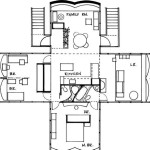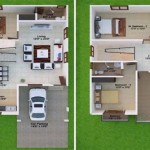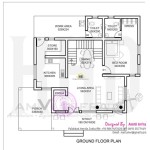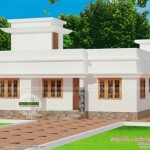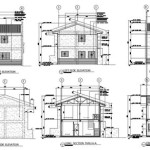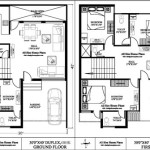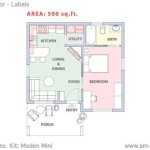Retreat House Plans: Designing Spaces for Reflection and Renewal
Retreat houses serve as sanctuaries, offering individuals and groups respite from the demands of daily life. They provide environments conducive to introspection, learning, and spiritual renewal. Effective retreat house plans are essential to creating these supportive spaces. Architectural design, spatial arrangement, and landscaping all contribute to the overall atmosphere and functionality of a retreat center. This article explores key considerations in developing retreat house plans that foster a sense of peace, community, and personal growth.
Understanding the Purpose and Target Audience
Before embarking on architectural design, a clear understanding of the retreat house's purpose and target audience is crucial. The intended focus – whether spiritual, wellness-oriented, or educational – will significantly influence the design choices. A retreat center focused on meditation, for example, will prioritize spaces for quiet contemplation and mindfulness practices. Conversely, a retreat designed for team-building activities will require larger gathering spaces and facilities for group exercises.
The target audience also plays a vital role. Considerations include the average group size, the expected age range of participants, and any accessibility needs. A retreat catering to families with young children will incorporate play areas and family-friendly accommodations. A retreat designed for seniors will prioritize accessibility features such as ramps, handrails, and easily navigable pathways. Defining the purpose and target audience early in the planning process ensures that the retreat house design aligns with its intended use and effectively serves its users.
Furthermore, the philosophy or guiding principles of the retreat should be considered. A silent retreat, for instance, will necessitate design elements that minimize noise and promote a quiet environment. The architectural materials, color palettes, and overall aesthetic should reflect the underlying values of the retreat center. This alignment between design and purpose creates a cohesive and harmonious environment that supports the retreat experience.
Essential Components of Retreat House Plans
Retreat house plans typically encompass several essential components, each designed to fulfill specific needs of retreat participants. These components can be broadly categorized into accommodations, communal spaces, private reflection areas, and support facilities. The specific requirements for each component will vary depending on the size and scope of the retreat center.
Accommodations: Guest rooms or residential units are fundamental to any retreat house. These spaces should provide comfortable and private environments for rest and reflection. Room configurations can range from individual rooms with en-suite bathrooms to shared dormitories or cabins. Considerations include bed configurations (single, double, twin), storage space for personal belongings, and adequate natural light and ventilation. Attention should be given to soundproofing to minimize disturbances and ensure restful sleep.
Communal Spaces: Communal spaces are critical for fostering a sense of community and facilitating group activities. These areas can include a dining hall, a meeting room or conference space, a library, or a common lounge. The design of these spaces should encourage interaction and collaboration. Ample seating, flexible furniture arrangements, and appropriate acoustics are all important factors. Thoughtful lighting design can create a welcoming and comfortable ambiance.
Private Reflection Areas: Retreat houses should also offer spaces for individual contemplation and reflection. These areas can include meditation rooms, prayer rooms, outdoor gardens, or quiet reading nooks. The design of these spaces should promote a sense of peace and tranquility. Natural elements, such as plants, water features, and natural light, can enhance the reflective atmosphere. Careful attention to acoustics is essential to minimize distractions and create a serene environment.
Support Facilities: Support facilities are necessary for the smooth operation of a retreat house. These areas can include a kitchen, laundry facilities, storage areas, administrative offices, and staff accommodations. The design of these spaces should prioritize functionality and efficiency. Adequate storage space is essential for maintaining a clean and organized environment. Well-equipped kitchen facilities are necessary for preparing meals for retreat participants.
In addition to these core components, some retreat houses may include specialized facilities such as art studios, yoga studios, or therapy rooms. These additions should be carefully considered based on the specific focus of the retreat center and the needs of its participants.
Architectural Style and Materials
The architectural style and choice of materials significantly influence the overall atmosphere and impact of a retreat house. The design should complement the surrounding environment and promote a sense of harmony with nature. Sustainable and eco-friendly materials are increasingly popular choices for retreat house construction, aligning with the values of many retreat participants.
Architectural Style: Options range from traditional and rustic designs to modern and minimalist styles. A traditional design might incorporate natural materials such as wood and stone, creating a warm and inviting atmosphere. A modern design might feature clean lines, expansive windows, and a focus on natural light. The specific architectural style should reflect the purpose and philosophy of the retreat center. A retreat focused on nature and ecological awareness might opt for an earth-house design, integrating the building into the landscape.
Materials: The choice of materials should consider both aesthetic appeal and environmental impact. Sustainable materials such as reclaimed wood, bamboo, and recycled concrete are increasingly popular choices. Natural materials can create a connection to the surrounding environment and promote a sense of well-being. The use of locally sourced materials can also reduce the environmental footprint of the construction project.
Sustainable Design: Incorporating sustainable design principles is crucial for creating an environmentally responsible retreat house. This includes maximizing energy efficiency through passive solar design, using renewable energy sources such as solar panels, and implementing water conservation measures such as rainwater harvesting. Green roofs, which are roofs covered in vegetation, can provide insulation, reduce stormwater runoff, and create habitats for wildlife. Sustainable landscaping practices, such as xeriscaping, can minimize water usage and promote biodiversity.
Furthermore, the interior design should also reflect the chosen architectural style and materials. Natural and organic materials can create a comfortable and inviting atmosphere. Color palettes should be carefully selected to promote relaxation and tranquility. Soft, muted colors are often preferred for retreat houses, as they create a calming effect. The use of natural light is also crucial for creating a sense of well-being.
Landscaping and Outdoor Spaces
The landscaping and outdoor spaces surrounding a retreat house are just as important as the interior design. These areas provide opportunities for connection with nature, outdoor activities, and quiet contemplation. Careful planning of the outdoor spaces can enhance the overall retreat experience and create a sense of peace and tranquility.
Gardens: Gardens can provide beautiful and therapeutic spaces for retreat participants. Meditation gardens, with carefully placed rocks, plants, and water features, can create a serene environment for contemplation. Herb gardens can provide fresh ingredients for the kitchen and offer opportunities for learning about herbal remedies. Flower gardens can add color and beauty to the landscape and attract pollinators.
Walking Trails: Walking trails can provide opportunities for exercise, exploration, and connection with nature. Trails should be designed to be accessible to people of all abilities. Signage can be used to identify different plant species and provide information about the local ecosystem. Benches or rest areas can be placed along the trails to provide opportunities for relaxation and contemplation.
Outdoor Gathering Spaces: Outdoor gathering spaces can provide opportunities for group activities and social interaction. These areas can include patios, decks, or fire pits. Comfortable seating, shade structures, and appropriate lighting can create a welcoming and functional outdoor space. Outdoor dining areas can provide opportunities for enjoying meals in nature.
Water Features: Water features, such as ponds, streams, or fountains, can add a sense of tranquility and beauty to the landscape. The sound of running water can be soothing and meditative. Water features can also attract wildlife, such as birds and butterflies, adding to the natural beauty of the retreat environment.
The landscaping should be carefully integrated with the architectural design of the retreat house. The use of native plants can create a natural and sustainable landscape that requires minimal maintenance. The placement of trees and shrubs can provide shade and privacy. The overall goal of the landscaping should be to create a harmonious and inviting outdoor environment that supports the retreat experience.
Accessibility Considerations
Ensuring accessibility for all individuals is a critical aspect of retreat house plans. This includes complying with accessibility standards such as the Americans with Disabilities Act (ADA) and considering the needs of people with various disabilities. Accessibility features should be integrated seamlessly into the design, enhancing the overall experience for all users.
Ramps and Elevators: Ramps should provide access to all levels of the retreat house, including entrances, common areas, and guest rooms. Elevators can be necessary for multi-story buildings. Ramps should have a gentle slope and non-slip surfaces. Elevators should be spacious enough to accommodate wheelchairs and other mobility devices.
Accessible Restrooms: Accessible restrooms should be available throughout the retreat house. These restrooms should include grab bars, accessible toilets and sinks, and ample maneuvering space for wheelchairs. Accessible showers or bathtubs should also be provided in guest rooms.
Accessible Guest Rooms: A percentage of guest rooms should be designated as accessible, meeting ADA standards. These rooms should include features such as wider doorways, roll-in showers, accessible beds, and accessible storage space.
Visual and Auditory Aids: Visual and auditory aids can enhance accessibility for people with sensory impairments. This can include visual fire alarms, amplified telephones, and tactile signage. Closed captioning should be available on televisions in common areas and guest rooms.
Pathways and Grounds: Pathways throughout the grounds should be level and smooth, providing easy access for wheelchairs and other mobility devices. Tactile paving can be used to provide guidance for people with visual impairments. Signage should be clear and easy to read, with large print and high contrast colors.
In addition to complying with accessibility standards, it is important to consider the specific needs of the retreat participants. For example, providing quiet rooms for people with sensory sensitivities can enhance their comfort and well-being. Consulting with accessibility experts and disability advocates can help ensure that the retreat house is truly accessible to all.

House Baileys Retreat Plan Green Builder Plans

Lake Wedowee Creek Retreat House Plan Plans Vacation Porch

Retreat Floor Plan Recreation Series Ihc

Retreat House Floorplans Scientific Diagram

Floor Plan Friday Large Master Retreat Plans Home Design House

Mountain Retreat 15880ge Architectural Designs House Plans

Llanlliana Coastal Retreat House Plans 10 Bed

Floor Plans

House Plan 3 Bedrooms 2 5 Bathrooms Garage 2625 Drummond Plans

Plan 36205tx Two Story Master Retreat Mansion Floor House Plans Blueprints

